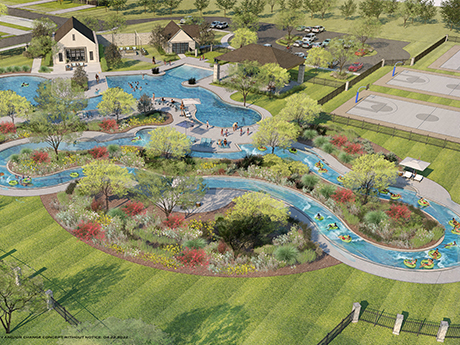By Jim Breitenfeld, CCIM, president, Sidecar Commercial Real Estate
While Collin County continues to see massive residential projects in markets like Anna, Celina and Melissa, as well as major redevelopments of existing shopping and dining destinations, a closer look at the region’s economic drivers reveals a significant shift in the types of industries that are driving demand for new commercial projects.
Housing remains a critical need for all of North Texas, one of the fastest-growing regions in the country. With that comes demand for revamped retail, restaurant and entertainment options that include a healthy mix of necessity and luxury users, as well as some basic demand for office space.

Jim Breitenfeld, Sidecar Commercial Real Estate
The latter is already well-supported via the swaths of corporate relocations and regional workforce consolidations that have occurred in the area over the past five to 10 years.
But those needs are fairly germane to any area that is experiencing rapid and substantial job and population growth. In addition to this activity, we now see new types of commercial tenants targeting Collin County. These include life sciences/biotech, supply chain/logistics and specialized healthcare uses.
According to data supplied by the U.S. Bureau of Labor Statistics and analyzed and published in the Sidecar Industry Insights’ Collin County Market Report, Collin County’s labor force at the end of 2021 totaled approximately 582,000 people and its’ economic base* was distributed amongst 192 industries (by six-digit NAICS code).
Industry Breakdown
The top four emerging industries in the trade area based on local shift share — defined as change in local industry employment that is contributing to or detracting from total local employment growth — are as follows: securities brokerage, nonresidential poured foundation contractors, freight transportation arrangement and kidney dialysis
centers.
These industries in Collin County experienced employment growth ranging from 68.5 percent to 262.2 percent between 2017 and 2020, while none of these industries exceeded 7.5 percent employment growth nationally during the same period. Each of these industries continues to add jobs today.
Real estate developers have responded to demand from these new user types with a multitude of projects. A review of property data compiled by CoStar Group reveals numerous proposed projects and sites under construction.
Large regional and national developers with active healthcare projects in Collin County include Harrod Healthcare Real Estate, which has a development at Spring Creek Parkway and Parkwood Boulevard in Plano; Dallas-based Caddis, whose Frisco Medical Pavilion II is underway in North Frisco; and Kansas City-based VanTrust Real Estate, which is developing Phase II of a larger medical office project within the Craig Ranch master-planned community in McKinney.
Local developers such as Wynmark Commercial and Huffman Builders are also active in bringing new properties to the market. One example of Wynmark’s proposed construction to meet the needs of healthcare users is an 18,000-square-foot medical office building located at the northeast quadrant of Panther Creek Parkway and Hillcrest Road in Frisco.
With a typical floor size of 9,000 square feet and rents starting at $30 per square foot on a triple-net basis, the project will add affordable, flexible space for both office and medical users. Construction is expected to begin in December, with occupancy scheduled for the third quarter of 2023. Space in this and other Wynmark and Huffman projects can also be purchased as condo units, offering a unique alternative for companies and practitioners that want to own their locations.
For fast-growing Melissa, Melissa Wellness Village is a proposed project that will add roughly 75,000 square feet of space to the local supply across six buildings.
In terms of supply chain/logistics, as well as other subcategories of industrial tenancy, there’s no shortage of development activity to meet Collin County’s ever-growing demand. Blue Star Land, the development and holding company of Jerry Jones, continues to build out The Star Business Park in north Frisco, with two buildings proposed in the near future. Ranging in size from 76,480 to 132,054 square feet, the facilities are designed to meet the needs of users with varying size requirements.
Supported by the growing regional importance of McKinney National Airport and rapid development along the State Highway 121 corridor, McKinney has several projects with multiple buildings each for industrial space seekers, including McKinney National Business Park, McKinney Airport Trade Center and McKinney 121.
Other projects worth monitoring within the industrial space that show multiple buildings proposed or planned include 121 Technology Park in Allen; Lookout Logistics Center in Richardson; Wylie Logistics Park; Anna Industrial Park; and Prosper Business Park. The latter two developments are good fits for smaller industrial
users.
Other emerging industries that are seeing strong employment growth throughout Collin County are largely tied to residential development — electrical wiring and equipment providers, roofing contractors, title insurance carriers and lumber wholesalers.
This finding comes as little surprise. The region offers a healthy supply of land for development in attractive suburban settings that appeal to residents who no longer require a commute into Dallas, as well as those who work within the various fast-growing office clusters throughout Plano, Frisco and McKinney.
— This article originally appeared int he August 2022 issue of Texas Real Estate Business magazine.
*Economic base: The industries were analyzed for their concentrations and contribution in the local economy to determine the economic base. Base industries are identified by finding industries with positive basic employment. Industries that meet this criterion produce goods and services beyond the needs of the local market, and therefore bring capital into the local market. Base industries may also be referred to as export industries with the remaining industries referred to as support industries. The support industries involve locally produced and consumed goods and services.


